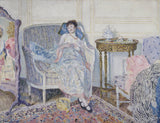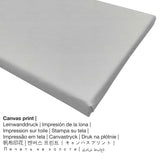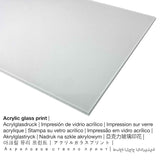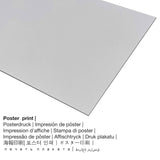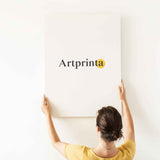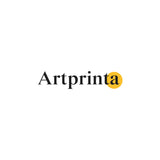Frederick Carl Frieseke, 1914 - In the Boudoir - fine art print
Tax included. Shipping calculated at checkout.
Background information about the product
This work of art In the Boudoir was made by the male American artist Frederick Carl Frieseke. The artwork was made with the following dimensions of 35 3/16 x 46 in (89,3 x 116,9 cm). Oil on canvas was applied by the painter as the technique for the masterpiece. The artwork is in the the digital collection of Los Angeles County Museum of Art. The modern art public domain artpiece is being provided with courtesy of Los Angeles County Museum of Art (www.lacma.org).: . Besides this, the alignment is landscape with a ratio of 4 : 3, which means that the length is 33% longer than the width. Frederick Carl Frieseke was a painter, whose style can primarily be classified as Impressionism. The Impressionist painter was born in 1874 in Owosso, Shiawassee county, Michigan, United States and passed away at the age of 65 in the year 1939 in New York City, New York state, United States.
Pick your desired product material
The product dropdown menu ofers you the opportunity to select a material and a size of your choice. We allow you to pick your favorite size and material among the following product individualization options:
- Acrylic glass print: A glossy print on acrylic glass, often named a print on plexiglass, will change the original artwork into magnificient wall décor. The work of art is custom-made with the help of modern UV printing machines. The great advantage of an acrylic glass art print is that sharp contrasts and also small image details become exposed due to the very subtle tonal gradation.
- The canvas print: The printed canvas, which should not be confused with a painting on a canvas, is an image printed from a UV direct printing machine. In addition to that, a canvas print makes a cosy and warm appearance. A printed canvas of your favorite masterpiece will provide you with the unique chance of transforming your art print into a large artpiece like you know from galleries. The great advantage of canvas prints is that they are relatively low in weight, meaning that it is easy and straightforward to hang your Canvas print without extra wall-mounts. Canvas prints are suitable for all types of walls.
- Aluminium dibond print: This is a metal print manufactured on aluminium dibond material with a true effect of depth. The Direct Print on Aluminum Dibond is the perfect start to the sophisticated world of art prints with aluminum. For the Print On Aluminum Dibond, we print the work of art right on the aluminium surface.
- Printed poster (canvas material): The Artprinta poster is a UV printed canvas paper with a fine surface structure. Please bear in mind, that depending on the size of the poster we add a white margin between 2-6 cm round about the print in order to facilitate the framing with your custom frame.
Legal disclaimer: We try everythig possible in order to depict the art products with as many details as possible and to illustrate them visually. Nonetheless, the colors of the print materials, as well as the printing may vary somehwat from the image on the device's screen. Depending on your settings of your screen and the nature of the surface, not all colors can be printed as realistically as the digital version on this website. Given that all our art reproductions are processed and printed by hand, there might also be minor deviations in the motif's size and exact position.
The product
| Product categorization: | fine art reproduction |
| Method of reproduction: | digital reproduction |
| Production process: | UV direct print |
| Provenance: | German production |
| Type of stock: | on demand production |
| Intended usage: | wall décor, wall gallery |
| Alignment: | landscape format |
| Image aspect ratio: | length : width - 4 : 3 |
| Meaning of the aspect ratio: | the length is 33% longer than the width |
| Product material choices: | metal print (aluminium dibond), poster print (canvas paper), canvas print, acrylic glass print (with real glass coating) |
| Canvas on stretcher frame (canvas print) variants: | 40x30cm - 16x12", 80x60cm - 31x24", 120x90cm - 47x35" |
| Acrylic glass print (with real glass coating) sizes: | 40x30cm - 16x12", 80x60cm - 31x24", 120x90cm - 47x35" |
| Poster print (canvas paper) size variants: | 40x30cm - 16x12", 80x60cm - 31x24", 120x90cm - 47x35" |
| Aluminium dibond print options: | 40x30cm - 16x12", 80x60cm - 31x24", 120x90cm - 47x35" |
| Framing of the art copy: | not available |
Artpiece details
| Piece of art title: | "In the Boudoir" |
| Classification of the artwork: | painting |
| Umbrella term: | modern art |
| Artwork century: | 20th century |
| Year of creation: | 1914 |
| Artwork age: | more than 100 years old |
| Original medium of artwork: | oil on canvas |
| Dimensions of the original work of art: | 35 3/16 x 46 in (89,3 x 116,9 cm) |
| Museum / location: | Los Angeles County Museum of Art |
| Museum location: | Los Angeles, California, United States of America |
| Available under: | www.lacma.org |
| Artwork license: | public domain |
| Courtesy of: | Los Angeles County Museum of Art (www.lacma.org) |
Artist overview
| Name: | Frederick Carl Frieseke |
| Alternative names: | Frieseke, friesecke, Frederick Carl Frieseke, f.c. frieseke, Frieseke Frederick Carl, friesecke f.c., Frederick C. Frieseke, Frieseke Frederick C. |
| Gender: | male |
| Nationality of artist: | American |
| Jobs: | painter |
| Country of origin: | United States |
| Artist classification: | modern artist |
| Art styles: | Impressionism |
| Died aged: | 65 years |
| Year of birth: | 1874 |
| Town of birth: | Owosso, Shiawassee county, Michigan, United States |
| Year died: | 1939 |
| Town of death: | New York City, New York state, United States |
© Copyright | Artprinta.com (Artprinta)
(© Copyright - by Los Angeles County Museum of Art - www.lacma.org)
In the Boudoir is typical of the many informal interior scenes Frieseke painted throughout his career. Although he much preferred to paint outdoors, the American public of the 1910s more readily bought his boudoir scenes of women involved in their toilette or in some other feminine activity. The artist’s wife, Sarah, better known as Sadie, usually posed as his model in their home. In this painting, as in many of Frieseke’s interiors of the 1910s, the model lounges in a room decorated with elegant French rococo furniture and an oriental carpet. In contrast to the figure’s restful pose, the scene is alive with decorative patterning. Frieseke’s interior is similar to those by Edouard Vuillard (18681940). Both artists often presented their figures in corners of rooms, viewing them diagonally and from a slightly elevated viewpoint. The floor tilts up, flattening the space of the room and thereby emphasizing the painting as an arrangement of flat shapes and patterns. Frieseke differed from Vuillard in his tendency to present his models more intimately attired or involved in more personal activities. In Torn Lingerie, 1915 (Saint Louis Art Museum), the model reveals her lovely leg while mending her slip, and in In the Boudoir she abandons her sewing basket to stretch out comfortably on the settee, allowing her kimono to slip off and expose her shoulders and breast. The palette of Frieseke’s interiors from his middle period varies in brilliance, some being as intense as his sunlit garden views. In the Boudoir is, in fact, one of his more delicate interiors of the mid-1910s: soft pastel blues, lavenders, and yellows predominate, and a silvery white is pervasive. There exists a smaller, almost exact version of In the Boudoir painted in a stronger palette (see Related Work). Frieseke occasionally painted smaller versions of completed paintings he admired. It is not known if the smaller version of this composition is such a replica or a study for the larger painting. When the painting was exhibited at the Anglo-American Exposition in London in 1914, it was praised for its subtlety and found more satisfactory than Frieseke’s other exhibit, The Garden Umbrella, n.d. (Telfair Academy of Arts and Sciences, Savannah, Ga.). According to a letter from the New York dealer Robert Macbeth to Frieseke, In the Boudoir was bought out of the 1915 Panama-Pacific International Exposition in San Francisco, where it won the grand prize. Mr. and Mrs. Baich, the collectors who donated the painting to the museum, began acquiring art in the mid-1910s and were known to purchase works from San Francsico dealers. Although it cannot be verified, it is quite plausible that the Balches may have bought In the Boudoir in 1915.

